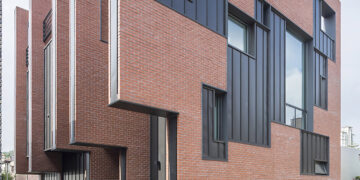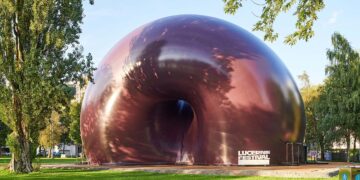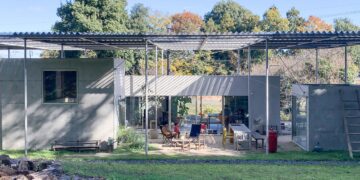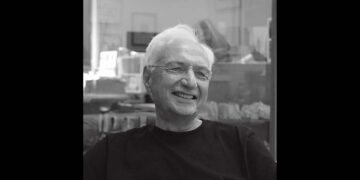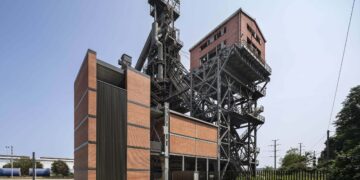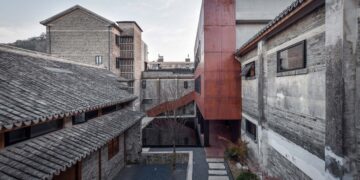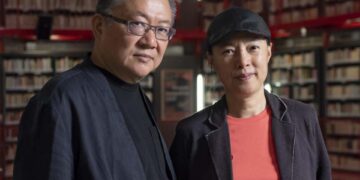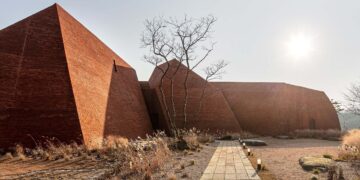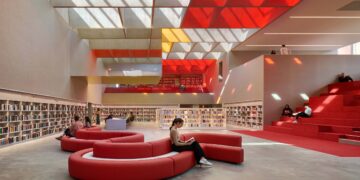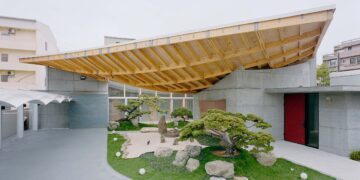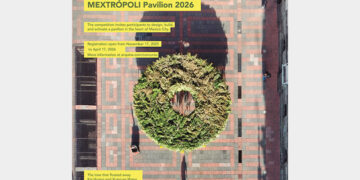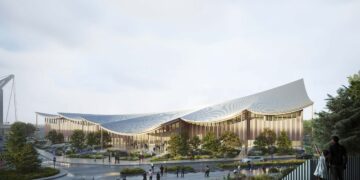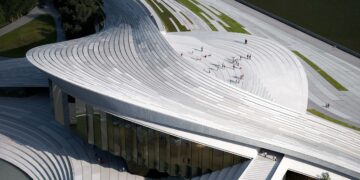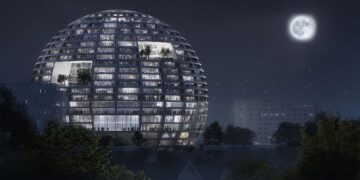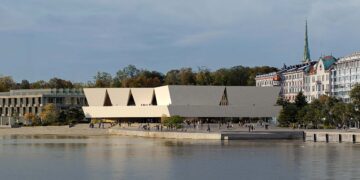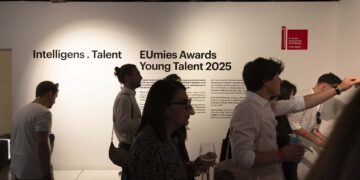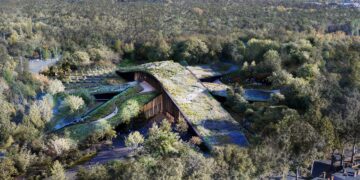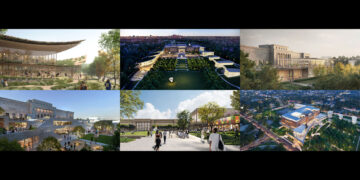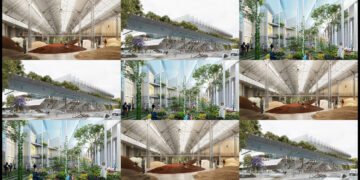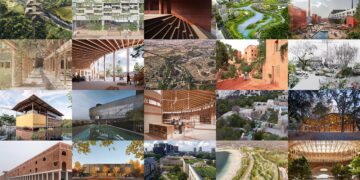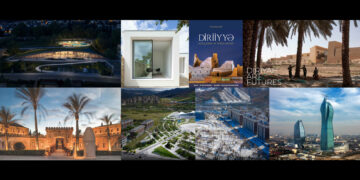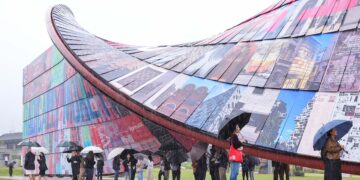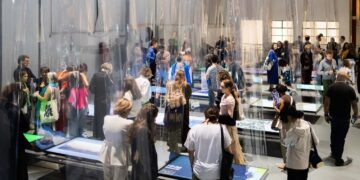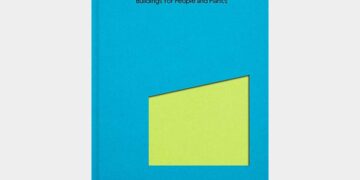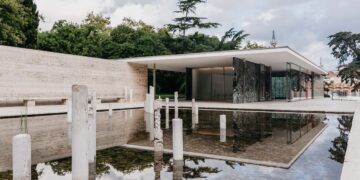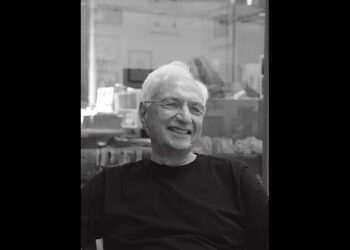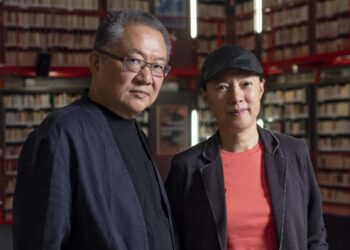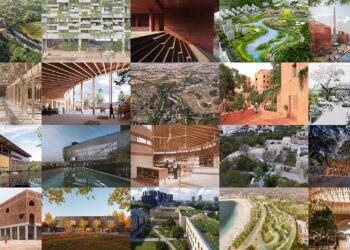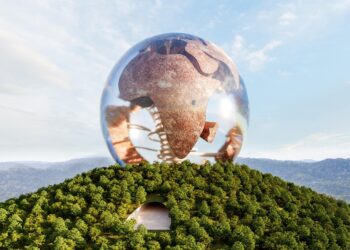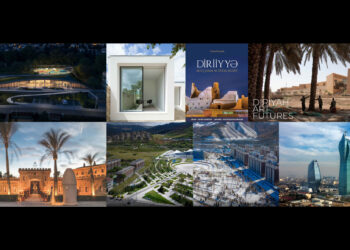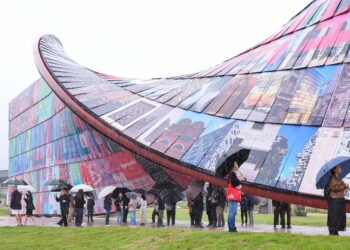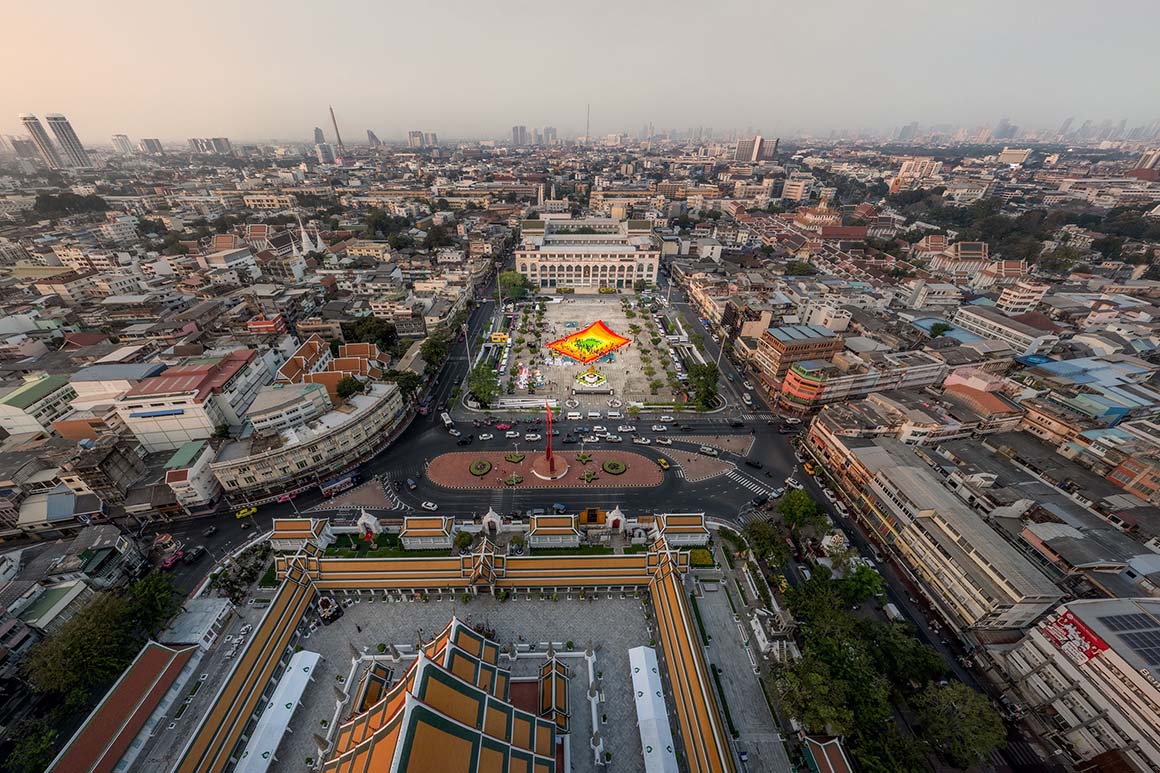
A colorful, square fabric draped over the Bangkok Design Week 2025 venue serves as a public installation highlighting plastic waste and recycling. Thailand generates around 2 million tons of plastic waste annually, with only a quarter of it being recycled. Approximately 5 tons of plastic waste are discarded into Thai oceans. As environmental pollution becomes a pressing issue, the government and industries have implemented policies and initiatives to reduce waste and increase recycling rates, drawing public attention to the seriousness of the problem. Against this backdrop, the Dutch architectural group MVRDV unveiled its ‘Mega Mat’ at Bangkok Design Week, a work that utilizes recycled plastic as a raw material for household products.
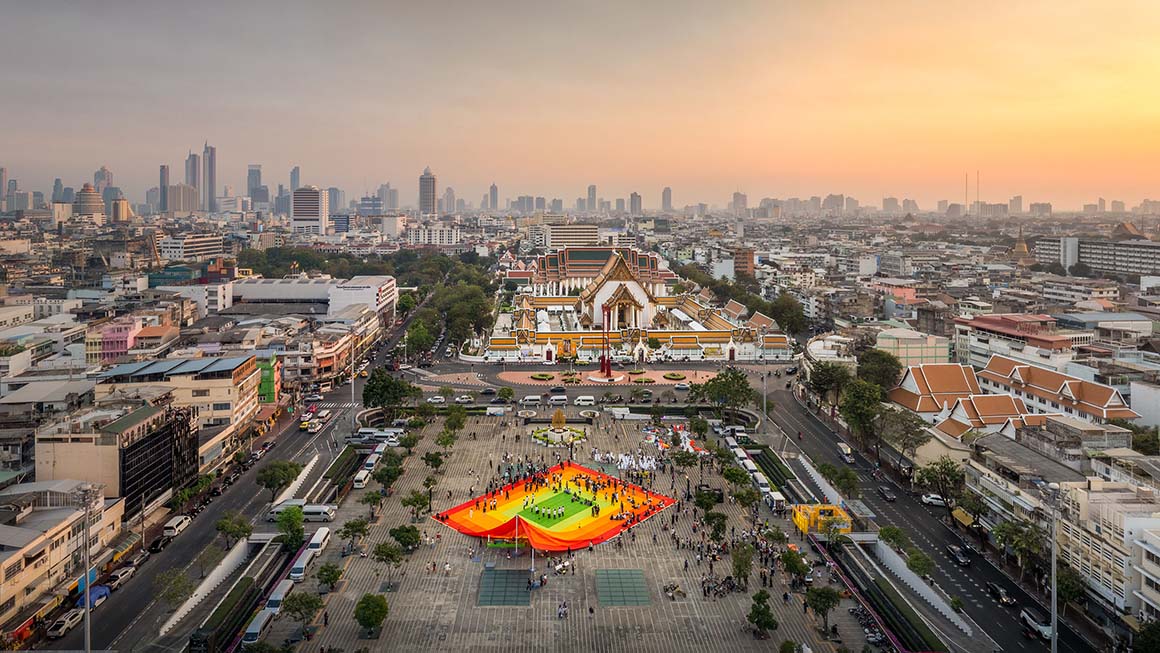
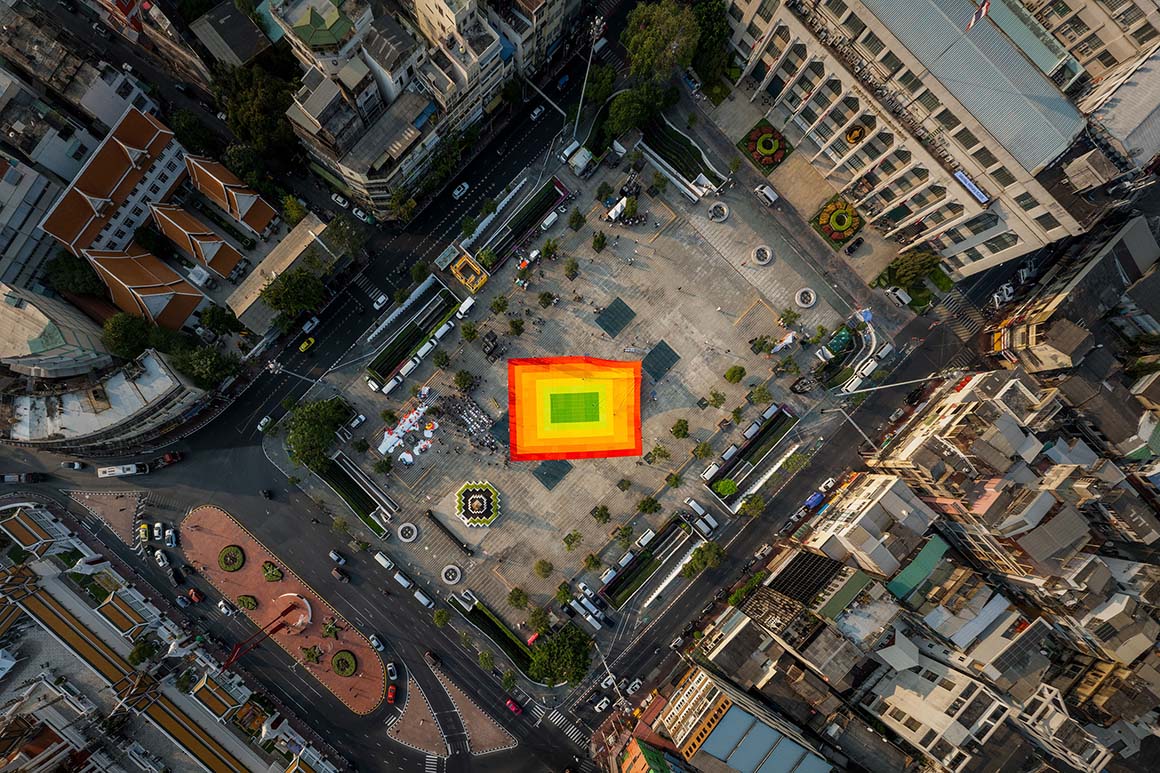

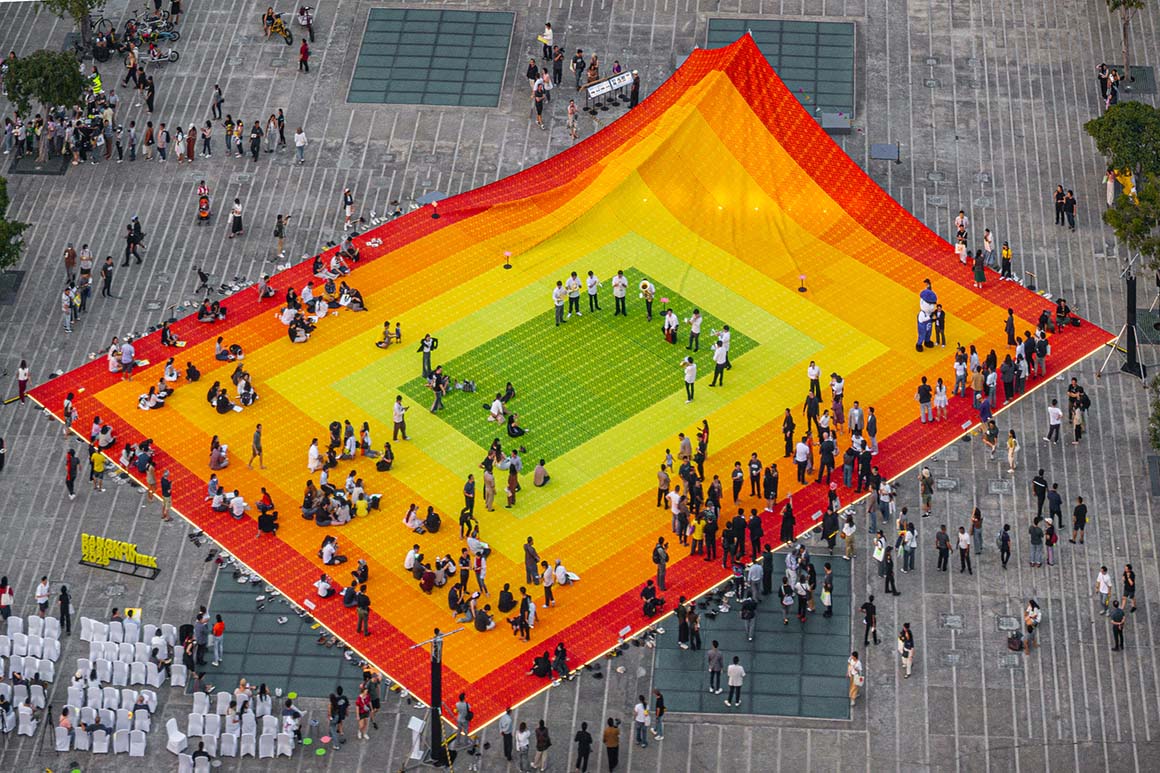
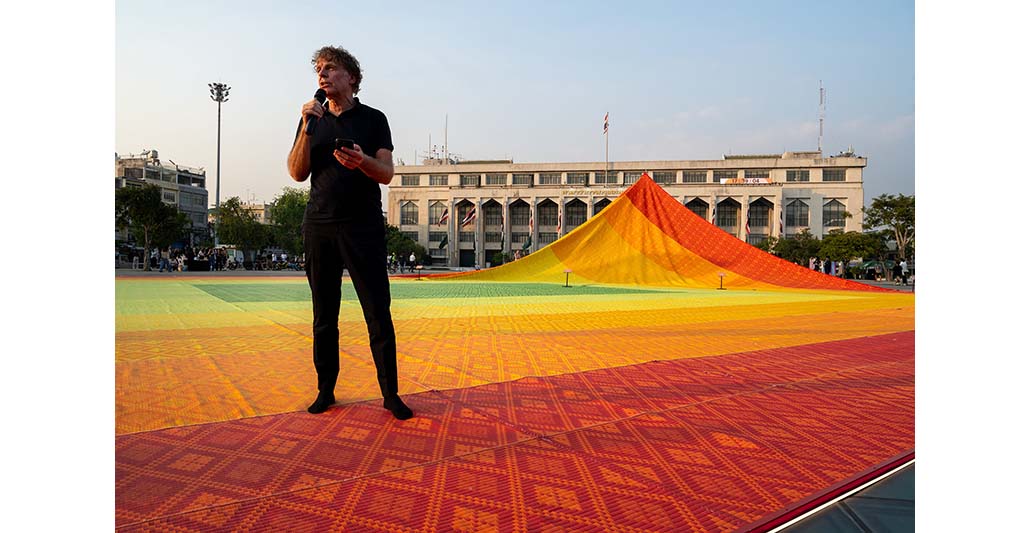
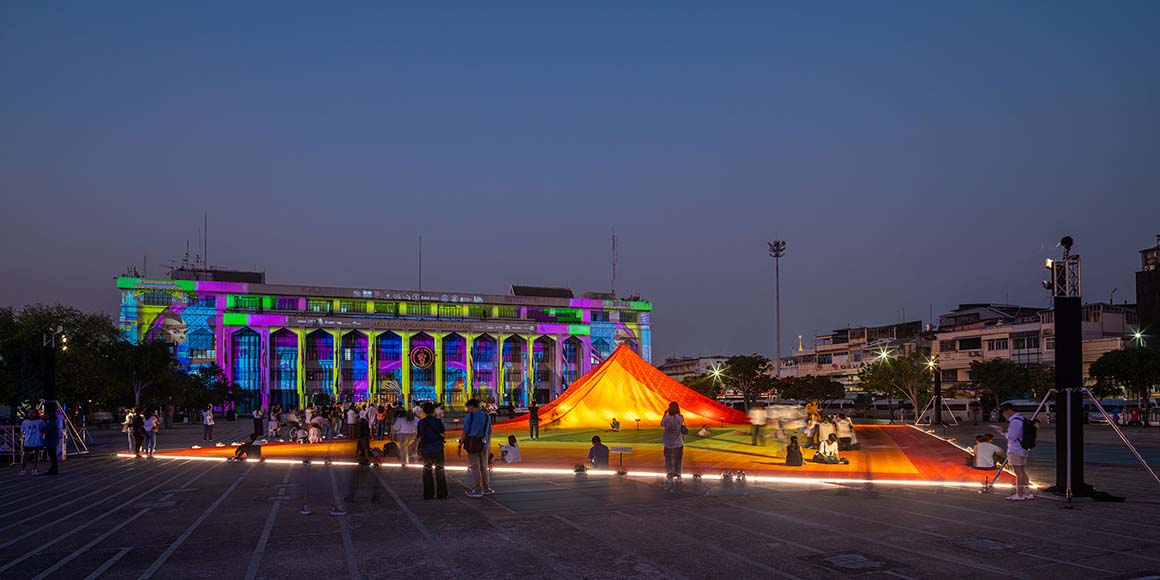
The Installation, with its gradient colors transitioning from red to green, adorns the plaza with a vibrant display. This modular artwork, woven from over 500 recycled plastic mats, illustrates the extent to which recycled plastics can be integrated into daily life. Covering 860 square meters, it also acts as a massive infographic depicting Thailand‘s plastic waste management.
The concentric colors of the mat represent different aspects of waste disposal: red for waste sent to unsanitary landfills, orange for waste sent to sanitary landfills with barriers in place that prevent ground pollution, yellow for uncollected waste, and green for recycled plastics. The combination of colors echoes the ornate roof of Wat Suthat Thepwararam, a traditional temple located behind the plaza. One corner of the mat curves upward, resembling the temple’s roof structure.
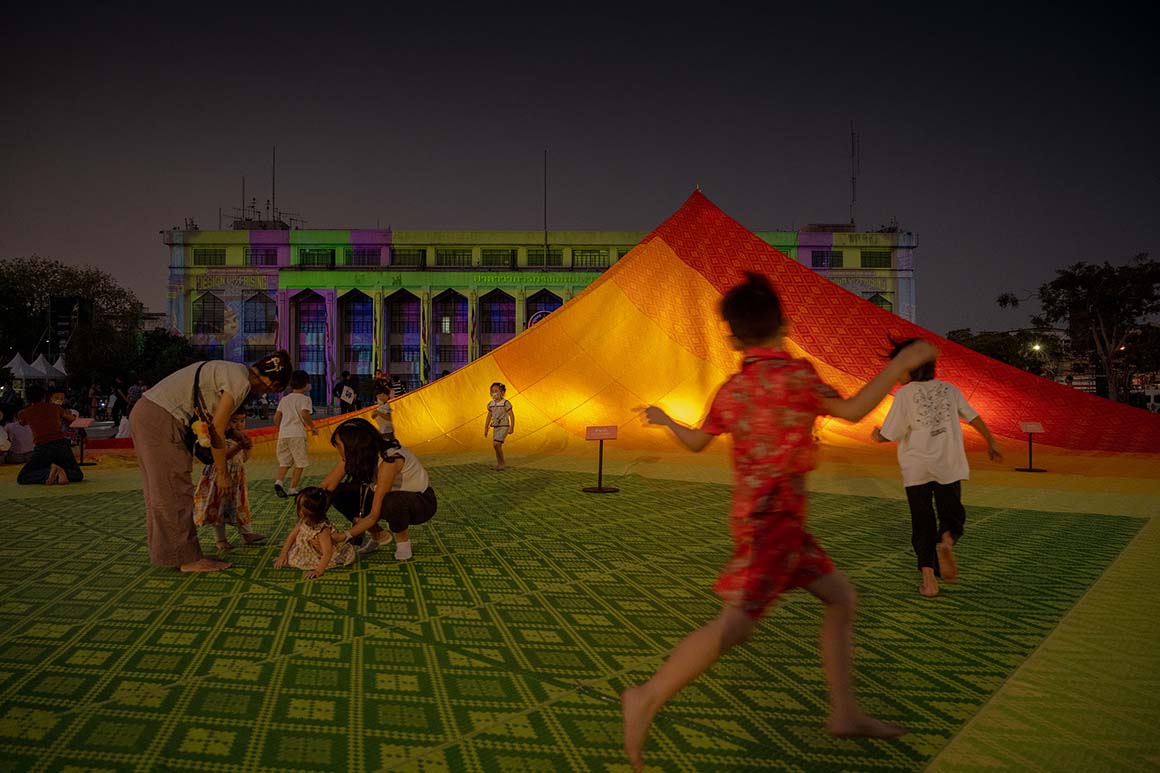
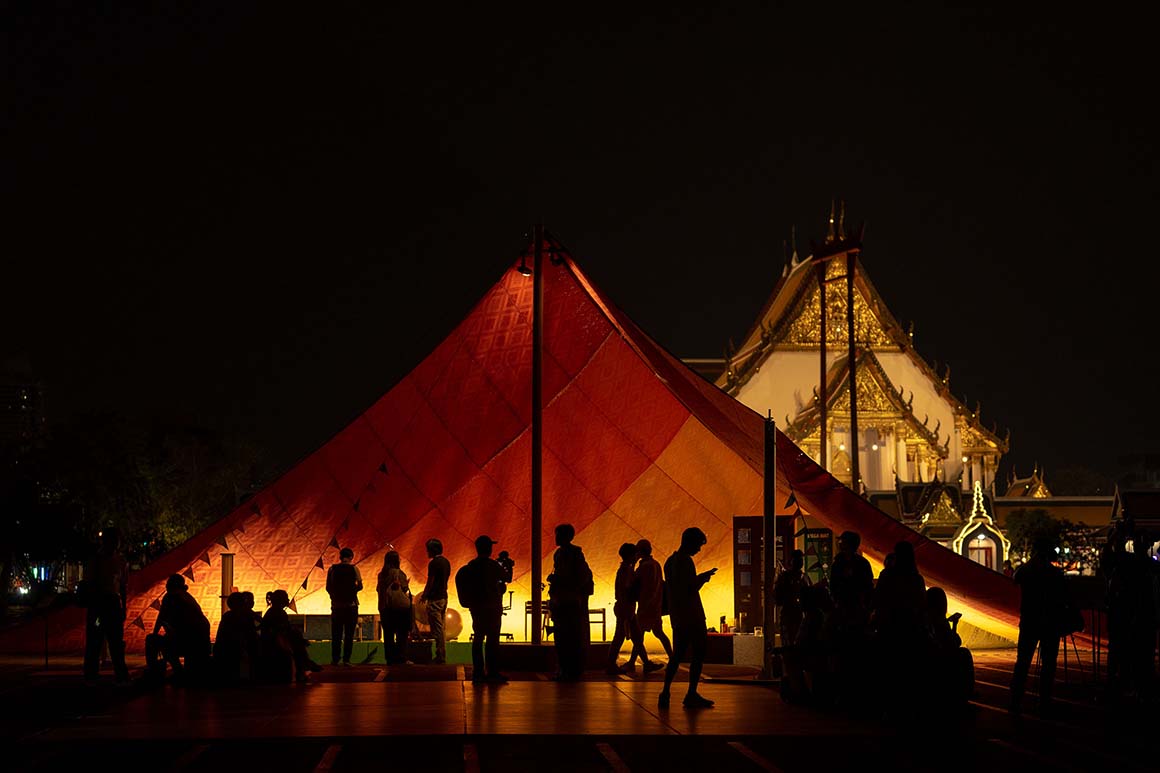
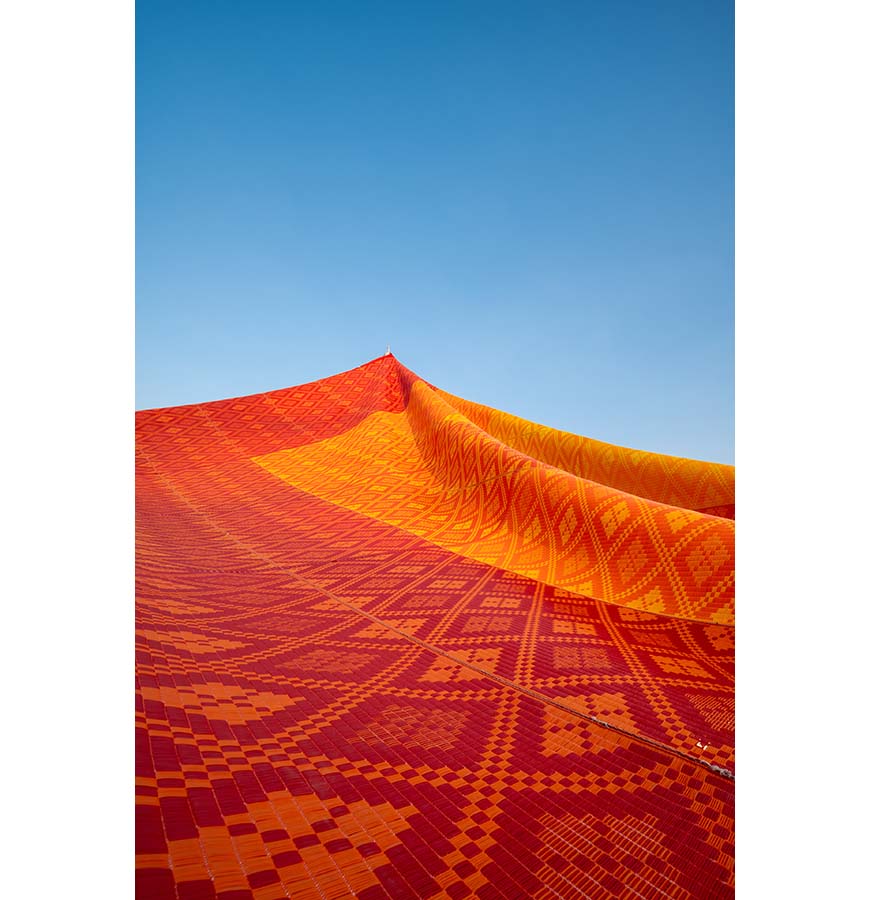
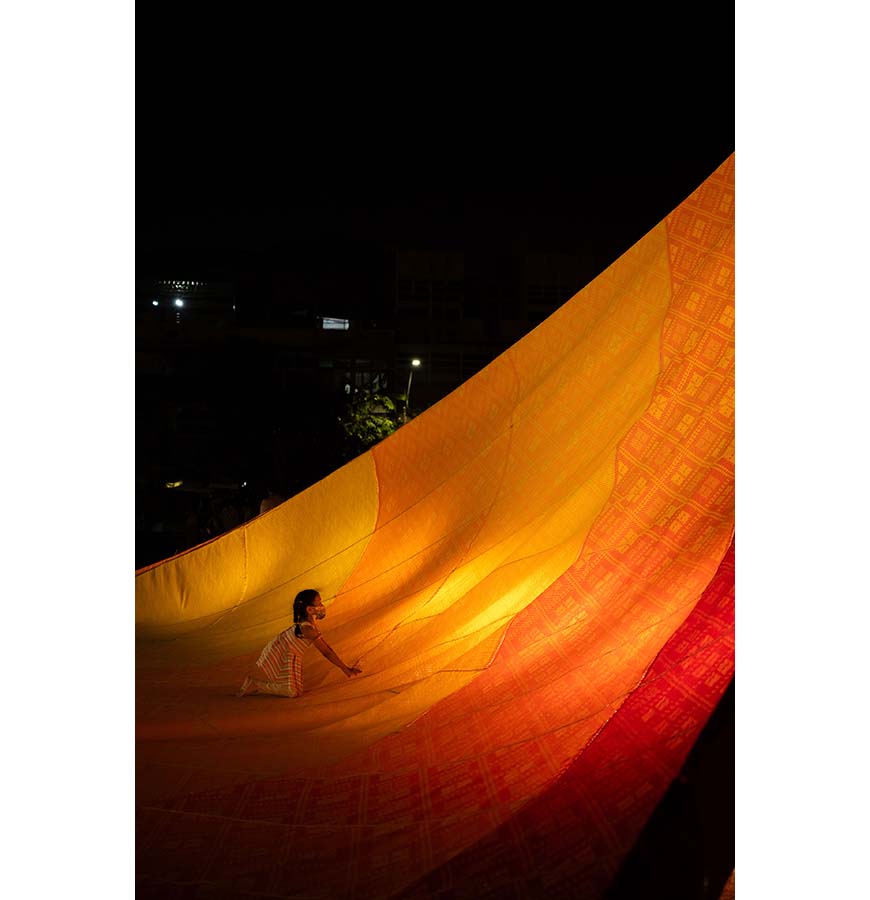
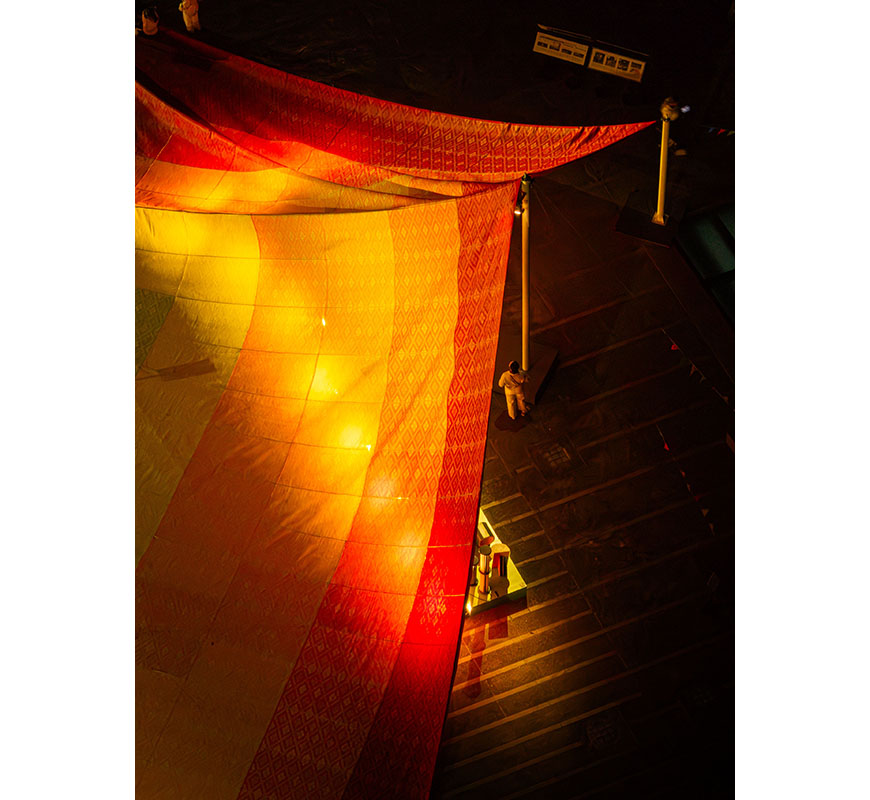
The shaded space beneath the mat is used as an information hub. Visitors can explore exhibitions that explain the story of plastic waste and recycling in Thailand and the meaning behind the Mega Mat. The mat itself also provides a colorful backdrop for various outdoor programs held on its surface.
Winy Maas, co-founder of MVRDV, explains: “Around the world, people are understanding the need to think more about the objects they use, and to see products as part of a connected ecological web. In Thailand this conversation is already well underway. I encourage that. With our design of the Mega Mat, we also wanted to celebrate it as an opportunity, to see the possibilities that are created by putting an emphasis on recycled materials. In a city dominated by concrete, this mat creates a soft space where you can take off your shoes, sit, lie down, read, and play.”
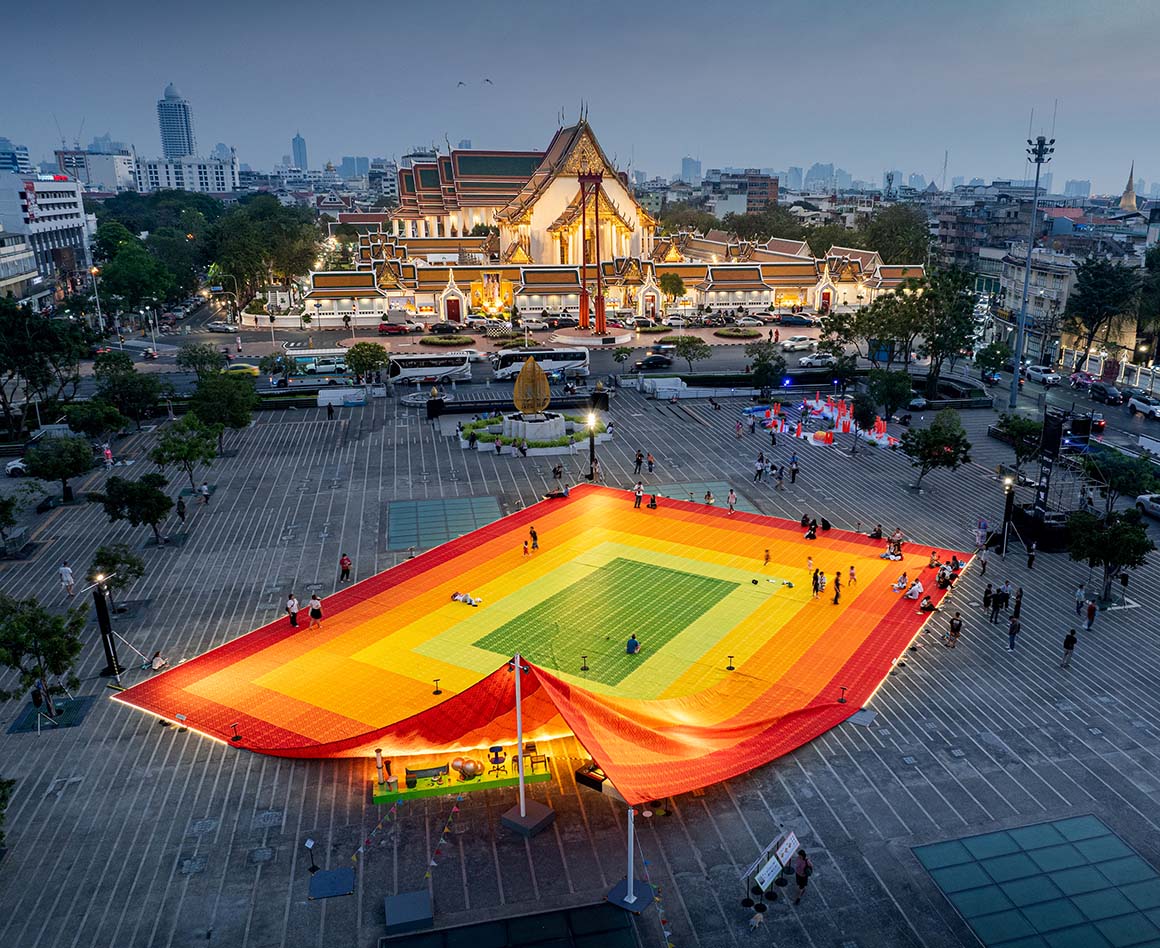
MVRDV’s recycling campaign at Bangkok Design Week reflects efforts toward sustainability, aligning with low-carbon and zero-emission goals outlined in the Paris Agreement. It has undertaken various initiatives, including developing CarbonScape, software for calculating embodied carbon, and establishing the Green Dream Foundation to offset carbon emissions from travel. Additionally, it recently held the ‘Carbon Confessions’ exhibition in Munich, discussing the role of architecture in creating sustainable urban infrastructure.
Each 1.8×0.9-meter module of the mat will be dismantled after the event and repurposed. Some will be donated to local temples, while others will be transformed into upcycled products like yoga mats or bags. The project was a collaboration between the Creative Economy Agency, PTT Global Chemical, and the Dutch Embassy.
Project: Mega Mat – Bangkok Design Week / Location: Laan Kon Muang Plaza, Bangkok, Thailand / Architect: MVRDV / Founding Partner in charge: Winy Maas Partner: Wenchian Shi Design Team: Sanne van der Burgh, Sredej Bunnag, Americo Iannazzone, Zhijia Xiong, Jiani You, Dimitrios Kogkalidis, Sen Yang, Miruna Dunu, Marcela Tamez Cabello Copyright: MVRDV Winy Maas, Jacob van Rijs, Nathalie de Vries / Partners: Creative Economic Agency, PTT Global Chemicals, Embassy of the Netherlands, Urban Ally Contractor: D-63 Recycled mats: Rukchat Lighting Designer: FOS Lighting Design Studio Exhibition collaboration: MORE / Client: Creative Economic Agency, Thailand Size and Programme: 875 sqm, temporary installation for gatherings and performances / Year: 2024-2025 / Photograph: ©Depth of Field Co.,Ltd. (courtesy of the architect)

